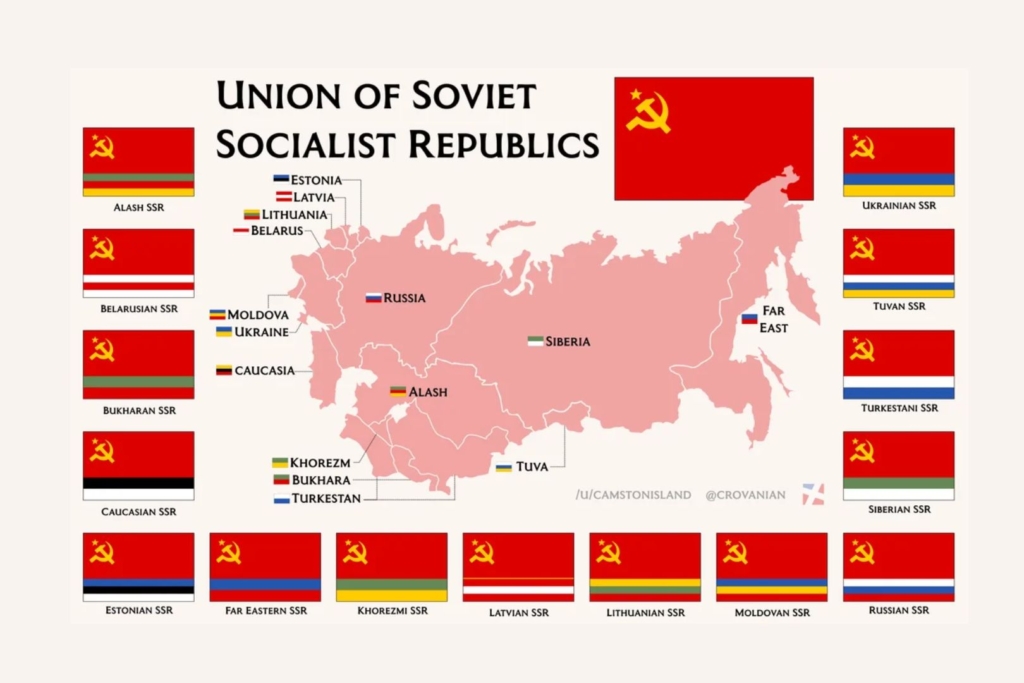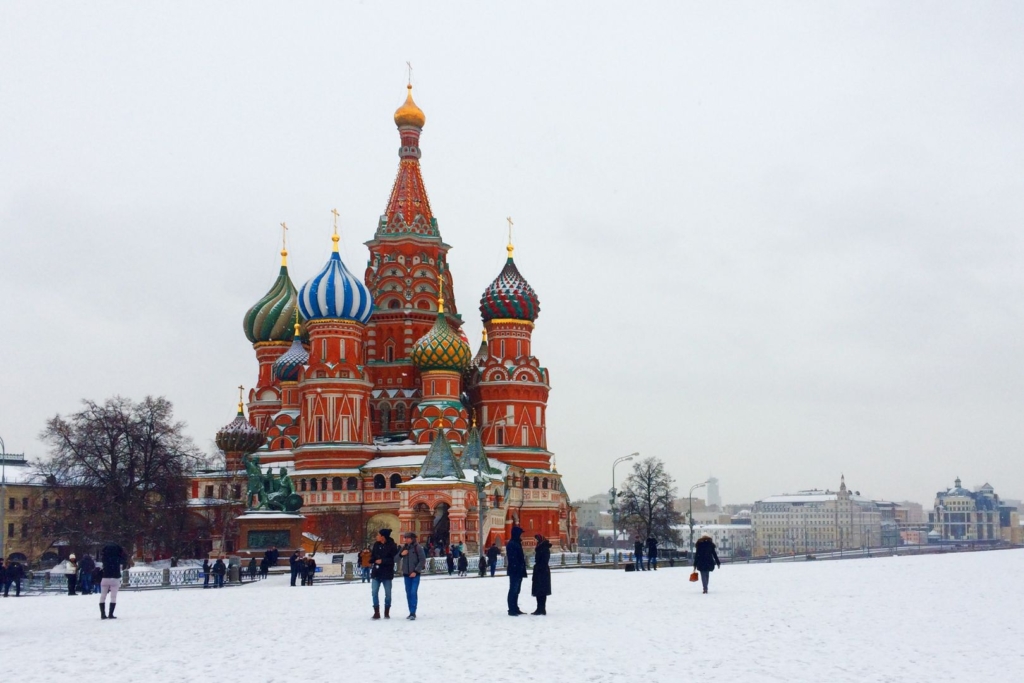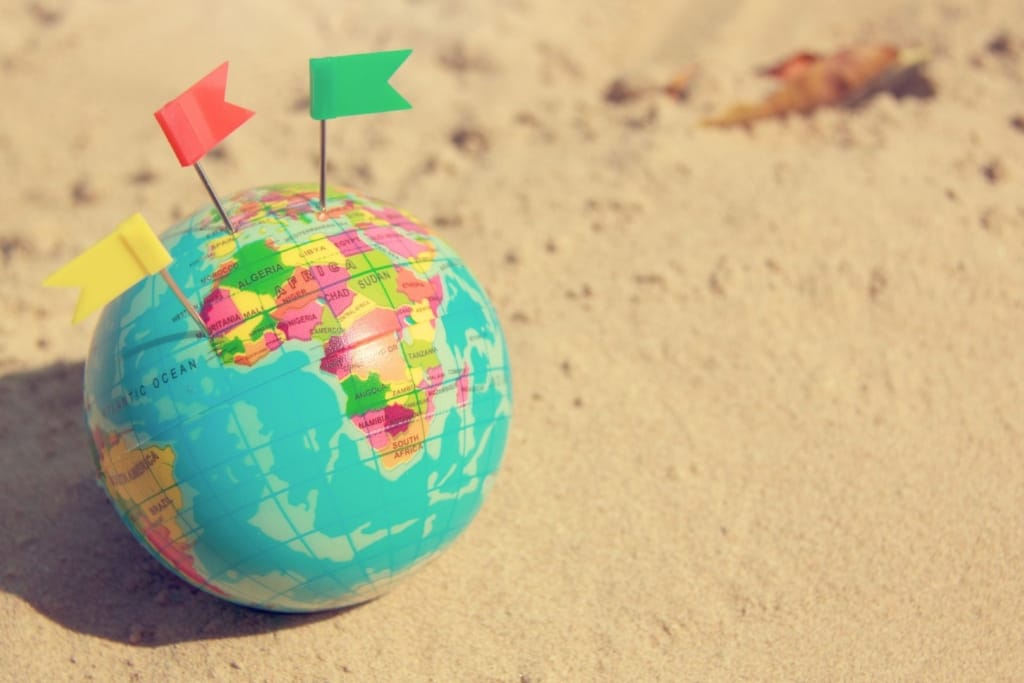Hindi is one of the most spoken languages in the world. Interestingly, it is primarily used only in the Indian subcontinent. Another surprising fact? Hindi is not the only official language of India. The country recognizes a remarkable 24 official languages, but Hindi stands out due to its strong cultural significance.
For instance, Hindi is the dominant language in Bollywood, the globally renowned Indian film industry. Additionally, Indian literature and music owe much of their richness to this language. Hindi has also historically been the language of the Indian diaspora, spoken in distant countries like the United Kingdom and Australia.
Today, we’ll explore more fascinating facts about this ancient language and its global influence. Plus, we’ll learn some essential Hindi phrases that will come in handy for your next trip to India.
आइए भारत की यात्रा पर चलें और हिंदी सीखें!
(Let’s travel to India and learn Hindi!)
Did you know Hindi is the third most spoken language in the world?
Yes, you read that right! More than 600 million people speak Hindi today, making it the third most spoken language globally, surpassed only by English and Mandarin Chinese. The speakers are primarily concentrated in the Indian subcontinent, and along with English, it serves as one of the official languages of the Republic of India.
India is not only one of the oldest civilizations, with a history spanning over 5,000 years, but it is also the second most populous country on Earth. With a population exceeding 1.4 billion people and a land area of nearly 3.5 million square kilometers, approximately half of India’s population speaks the language.

Why isn’t Hindi more widely spoken across India?
The answer is more complex than it seems, but let’s simplify it. While Hindi is the most widely spoken language in India, it is just one of 24 official languages and dialects in this vast nation. To better understand why India has such a diverse linguistic landscape, let’s take a look at its historical evolution.
India’s linguistic diversity
Hindi has its roots in Prakrit languages, which belong to a linguistic family encompassing hundreds of dialects. These languages, primarily spoken in the Indian subcontinent, evolved from Vedic Sanskrit over centuries, undergoing significant transformations. Below are some key milestones in this evolution:
The Vedic period and classical Sanskrit
For thousands of years, Sanskrit was India’s primary language for literature, religion, and administration. However, in everyday life, Prakrit languages started to emerge and evolve independently.
Prakrit languages and Apabhraṃśa (6th-13th Century AD)
Between the 6th and 13th centuries, regional languages continued to develop. This period saw the emergence of Apabhraṃśa. An intermediary linguistic phase between Sanskrit and modern Indian languages—including Hindi.
The evolution of medieval Hindi
During nearly five centuries of Muslim rule in India, Persian and Arabic influences shaped the Hindi language. This cultural exchange between rulers and locals brought significant linguistic changes.
Modern Hindi
By the 19th century, under British colonial rule, Hindi became more standardized and began to diverge more clearly from Urdu. It adopted the Devanagari script and solidified its role as India’s official language.
This linguistic journey leads us to an intriguing and sometimes politically controversial phenomenon—the unique evolution of the language in the modern era.
Significant similarities between Hindi and Urdu
Hindi is the official language of the Republic of India, as well as an official language in Fiji and a co-official language in countries like South Africa and Trinidad and Tobago. Additionally, large Indian communities across America, Europe, and Africa speak Hindi. But did you know that Hindi shares many similarities with one of the world’s most spoken languages?
Urdu is the official language of Pakistan, a country that emerged after India’s partition in 1947. Together, Hindi and Urdu have nearly one billion speakers. While they may seem like two distinct languages at first glance, they are, in reality, strikingly similar. The main difference lies in their writing systems and vocabulary, but their grammar, structure, and phonetics remain almost identical.
A common origin: Hindustani
Both languages originate from Hindustani, a language that developed in northern India during the Delhi Sultanate and Mughal Empire. Hindustani emerged as a lingua franca, combining elements of Sanskrit, Persian, Arabic, and Turkish to facilitate communication among diverse linguistic communities in the Indian subcontinent.
Identical grammar and sentence structure
Hindi and Urdu share almost identical grammatical rules, making it easier for speakers of one language to learn the other:
- Both follow a Subject-Object-Verb (SOV) word order.
- They use postpositions instead of prepositions, meaning modifiers come after the noun instead of before.
- Verb conjugation, tenses, and plural formation are the same in both languages.
For example, the sentence “I am going to the market” is written as follows:
- Hindi: मैं बाजार जा रहा हूँ (Main bazaar ja raha hoon)
- Urdu: میں بازار جا رہا ہوں (Main bazaar ja raha hoon)
As you can see, the structure is identical, with the only difference being the writing system.
Similar pronunciation and phonetics
Phonetically, Hindi and Urdu are nearly identical, with only minor differences in intonation and certain sounds:
- Both languages share the same vowel and consonant sounds.
- Their phonetic structures allow speakers to understand each other effortlessly.
- Urdu has slight Persian and Arabic influences, but they are not significant enough to hinder spoken communication.
Thanks to these phonetic similarities, Hindi and Urdu speakers can engage in conversations without needing translation.
Common usage in media and popular culture
Hindi and Urdu are widely used in cinema, music, literature, and television, further reinforcing their cultural and linguistic similarities:
- Bollywood movies frequently use a mix of Hindi and Urdu, making them easily understandable for audiences in both India and Pakistan.
- Music from both countries incorporates common words and expressions, making songs accessible to speakers of both languages.
- Many writers and poets create works that can be understood by both Hindi and Urdu speakers, without being strictly in one language or the other.
This shared presence in popular culture strengthens the connection between these languages.
Shared loanwords and vocabulary
Both Hindi and Urdu have borrowed words from other languages over centuries, further contributing to their lexical similarities:
- From Sanskrit – words related to daily life, culture, and religion.
- From Persian and Arabic – terms related to administration, science, and philosophy.
- From English – modern vocabulary concerning technology, education, and globalization.
Common words like:
- “Kursi” (chair)
- “Pani” (water)
- “Kitab” (book)
…are used interchangeably in both languages without any difference.
Hindi and Urdu: Two sides of the same coin
While Hindi and Urdu have distinct identities, their historical, linguistic, and cultural connections make them more alike than different. Despite their different scripts and vocabularies, their shared grammatical structure, pronunciation, and cultural influence highlight their deep-rooted similarities.

The global influence of Hindi
Hindi has had a significant impact in various fields, including culture, economy, and global communication. Let’s explore some of the key ways Hindi has shaped the modern world.
Culture and cinema: Bollywood as a global ambassador of Hindi
One of the biggest factors behind Hindi’s global reach is Bollywood. This Mumbai-based film industry produces thousands of movies every year, gaining immense popularity in Asia, Africa, the Middle East, and the West.
Thanks to Bollywood, many Hindi words and expressions have crossed borders. Additionally, Bollywood has achieved something that no politician has been able to do for decades: bringing India and Pakistan together. Many Bollywood films include Pakistani cultural elements, creating a beautiful cultural integration.
The global expansion of the indian diaspora
The massive migration of Hindi speakers to different parts of the world has made Hindi a widely spoken language. Countries such as the United States, United Kingdom, Canada, South Africa, and Fiji have millions of Hindi speakers.
Indian communities abroad have kept Hindi alive, playing a crucial role in its preservation and expansion worldwide.
Linguistic influence on other languages
Hindi has contributed many words to other languages. Due to British colonial influence, several Hindi words have been incorporated into English, including:
- “Jungle” (forest)
- “Bungalow” (a small house)
- “Karma”
- “Pajamas” (sleepwear)
But here’s something you might not know: these words either don’t have a direct translation in other languages or are commonly used in their Hindi form. If you speak Spanish, French, or German, you’re probably using Hindi-derived words without realizing it!
Economic and commercial importance of Hindi
As India’s economy continues to grow, Hindi is becoming increasingly important in global business. Many international companies have started offering services and content in Hindi to connect with India’s vast population.
Additionally, India has become a global leader in outsourcing. Many major brands operate call centers and tech support hubs in the country.
Now, are you interested in learning more about this ancient and influential language? Let’s explore some of the most common Hindi expressions that you can use in daily life!
Common Hindi words and expressions
India is one of the most visited countries in the world. Every year, hundreds of thousands of travelers embark on what they describe as a “life-changing journey.” If you’re planning a trip to India, knowing a few essential Hindi phrases can make your experience even better. Let’s take a look:
Greetings, farewells, and everyday expressions
| Greetings in Hindi | |
|---|---|
| Hindi | English |
| Namaste (नमस्ते) | Hello/Hi |
| Aap kaise hain? (आप कैसे हैं?) | How are you? |
| Mera naam [your name] hai (मेरा नाम [your name] है) | My name is [your name] |
| Basic phrases in Hindi | |
|---|---|
| Hindi | English |
| Kitna hai? (कितना है?) | How much is it? |
| Mujhe yeh pasand hai (मुझे यह पसंद है) | I like this |
| Mujhe madad chahiye (मुझे मदद चाहिए) | I need assistance |
| Basic questions in Hindi | |
|---|---|
| Hindi | English |
| Yeh kya hai? (यह क्या है?) | What is this? |
| Kahaan hai? (कहाँ है?) | Where is it? |
| Kya aapko yeh pasand hai? (क्या आपको यह पसंद है?) | Do you like this? |
Numbers, days, and colors
| Numbers in Hindi | |
|---|---|
| Hindi | English |
| Ek (एक) | One |
| Do (दो) | Two |
| Teen (तीन) | Three |
| Chaar (चार) | Four |
| Paanch (पाँच) | Five |
| Chheh (छह) | Six |
| Saat (सात) | Seven |
| Aath (आठ) | Eight |
| Nau (नौ) | Nine |
| Das (दस) | Ten |
| Colors in Hindi | |
|---|---|
| Hindi | English |
| Laal (लाल) | Red |
| Neela (नीला) | Blue |
| Peela (पीला) | Yellow |
| Hara (हरा) | Green |
| Kaala (काला) | Black |
| Safed (सफ़ेद) | White |
| Bhura (भूरा) | Brown |
| Gulabi (गुलाबी) | Pink |
| Naranja (नारंगी) | Orange |
| Baingani (बैंगनी) | Purple |
| Days of the week in Hindi | |
|---|---|
| Hindi | English |
| Somvaar (सोमवार) | Monday |
| Mangalvaar (मंगलवार) | Tuesday |
| Budhvaar (बुधवार) | Wednesday |
| Guruvar (गुरुवार) | Thursday |
| Shukravaar (शुक्रवार) | Friday |
| Shanivaar (शनिवार) | Saturday |
| Ravivaar (रविवार) | Sunday |
| Months in Hindi | |
|---|---|
| Hindi | English |
| Janavari (जनवरी) | January |
| Faravari (फरवरी) | February |
| Maarach (मार्च) | March |
| Aprail (अप्रैल) | April |
| Mai (मई) | May |
| Joon (जून) | June |
| Julai (जुलाई) | July |
| Agast (अगस्त) | August |
| Sitambar (सितंबर) | September |
| Aktubar (अक्टूबर) | October |
| Navaambar (नवंबर) | November |
| Disambar (दिसंबर) | December |
How to learn Hindi easily with technology
Learning a new language, especially one with a different alphabet, grammar, and structure, can seem challenging. However, thanks to modern technology, mastering Hindi has never been easier.
With Talkao apps, you can instantly translate any text and even start a conversation in Hindi without difficulty. Using the camera translator and augmented reality features, you can read Sanskrit texts effortlessly—just point your phone at the text, and the app will translate it for you into over 125 languages.
Additionally, with Talkao Translate, you can communicate and understand real-time conversations in Hindi. Thanks to AI-powered voice translation, speaking Hindi has never been more convenient.
So, enjoy your journey and immerse yourself in one of the world’s most fascinating languages!
















